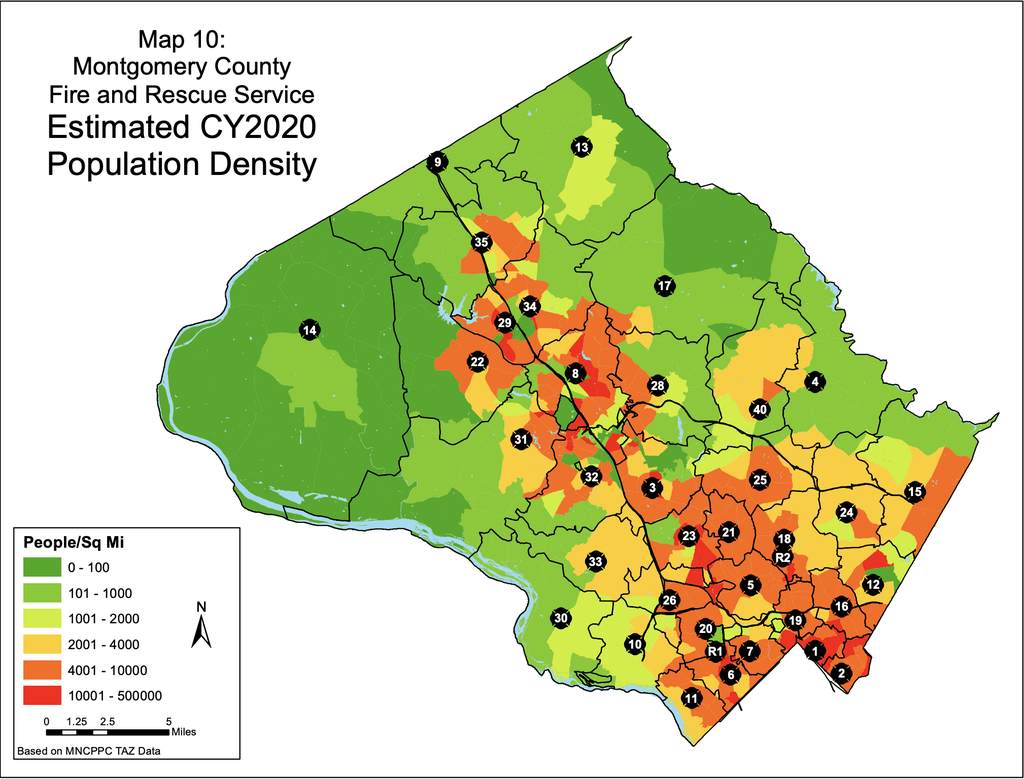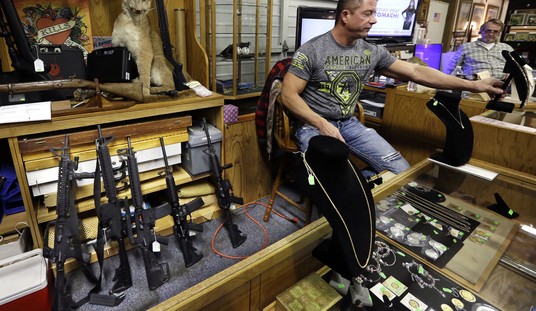Even before state lawmakers in Annapolis approved their own “carry killer” legislation, local authorities in Montgomery County, Maryland had slapped their own response to the Bruen decision on the books. The county ordinance bans the possession, transport, sale, and transfer of all firearms within 100-yards of any “sensitive place” in the county, even those transported in a vehicle by a licensed concealed carry holder.
Shortly after the law was put in place, Maryland Shall Issue filed a lawsuit alongside a Montgomery County FFL, a firearms instruction business, and eight individual plaintiffs, all of whom possess a valid Maryland carry license. Last December, the plaintiffs filed a request for a temporary restraining order and injunction prohibiting enforcement of the new restrictions, but a U.S. District Court judge turned away that request earlier this month. Now the plaintiffs are appealing that decision to the Fourth Circuit Court of Appeals, and included in their evidence is an eye-opening map of just how extensive these sensitive places are.
From the brief: "This is what Montgomery County looks like with the Section 57-11(a) 100-yard exclusionary zones (red shaded areas)" pic.twitter.com/zVptqBGeh3
— Firearms Policy Coalition (@gunpolicy) July 17, 2023
Those areas in red are all of the “exclusionary zones” where lawful concealed carry is forbidden, and it bears a striking resemblance to a map showing the population density in the county. Basically, guns are banned where most of the Montgomery County residents live, work, and play.

Most of Montgomery County’s population lives relatively close to the 495 Beltway, which runs along the southern part of the county, and the I-270 corridor that splits the county in two from northwest to southeast. The map of the “gun-free zones” shows that’s exactly where most of these “exclusionary zones” are located. If you’re lucky enough to live in rural Montgomery County it might be possible for you to visit your local gas station or feed store without committing a felony by having your gun with you (at least as long as you leave it locked up in your trunk until you get there) but the vast majority of the hundreds of thousands of Montgomery County residents are going to be in dire legal jeopardy if they so much as step foot outside their home with their carry gun on them, even if they possess a valid carry license.
As the plaintiffs point out in their appeal to the Fourth Circuit, this is no accident on the part of overzealous lawmakers. This is exactly what they wanted to put in place.
The County Executive was vocal in opposing Bruen, as was the sponsor of Bill 21-22E, the County Council President, who complained that the decision made it more difficult for the County to enact policies that “prevent someone’s Second Amendment right from infringing on the right of me and my family to go to a movie theater without having to wonder or worry about someone sitting next to me is carrying a gun on them.”
Those views were endorsed by the leadership of the Montgomery County Police Department, id., by the County Council, and by the County Executive. Bill 21-22E was enacted as emergency legislation and went into effect immediately upon the signature of the County Executive on November 28, 2023.
… As these maps make plain, it is literally impossible to drive in or through the County, including on Interstate Highways, like I-495 and I-270 and other thoroughfares, with a firearm without quickly entering one or more of these 100-yard exclusionary zones. The downtown areas in the County are almost completely “no go” zones. Indeed, plaintiffs Brandon Ferrell, Joshua Edgar, Deryck Weaver and Nancy and Ronald David cannot even carry outside their homes at all with their permits. The same is true for declarant Allan Barall.
That effect is not disputed by the County. That result is reinforced by Section 57-10, which, as noted, makes it unlawful for any person to have a gun “on his person, concealed or exposed, or in a motor vehicle where it is readily available for use.” That provision is not subject to any 100-yard limitation.
That result is indefensible. Bruen held that “there is no historical basis for New York to effectively declare the island of Manhattan a ‘sensitive place’” as that “would in effect exempt cities from the Second Amendment and would eviscerate the general right to publicly carry arms for self-defense.”
The island of Manhattan occupies approximately 23 square miles. Montgomery County occupies over 506 square miles. If New York may not “effectively” ban carry on the island of Manhattan or in cities, the County may not “effectively” ban carry throughout the County. Bruen held that there is a “general right” to carry in public, but the County has extinguished that right, exactly as its officials intended.
How did the trial court ever uphold these restrictions? Well, according to the plaintiffs the judge relied “exclusively” on a handful of post-Civil War statutes, adopting a position taken by a three-judge panel on the Eleventh Circuit Court of Appeals in a case involving Florida’s ban on gun sales to under-21s. But as the plaintiffs point out, the Eleventh Circuit vacated that decision last Friday, rendering not only the decision in NRA v. Bondi moot, but mooting the district judge’s rationale in upholding Montgomery County’s “gun free zones” as well.
Apart from the now-vacated decision in Bondi, we know of no court that has held that the Reconstruction Era is “more probative” for the historical inquiry required by Bruen. In this case, the district court looked exclusively to laws from the Reconstruction Era, statutes enacted in the Territories and statutes or ordinances enacted in late 19th and 20th centuries in conducting the historical inquiry. The court dismissed Founding Era traditions as inconsistent with these statutes.
The district court’s analysis was error. Later statutes are to be rejected if they conflict with a Founding Era tradition and a court may not rely on statutes from the Territories and the late 19th and 20th centuries or on outliers. Bruen holds that “the lack of a distinctly similar historical regulation addressing that problem is relevant evidence that the challenged regulation is inconsistent with the Second Amendment.” The same “lack” is apparent here.
Section 57-11(a) and Section 57-10 ban firearms over vast tracts of privately owned land otherwise open to the public and those bans are thus analogous to New Jersey’s presumptive ban on carry on private property at issue in Koons v. Platkin, where the district court preliminarily enjoined that presumptive ban. New Jersey appealed that and other rulings to the Third Circuit and sought a stay of the injunction pending appeal. In a 2-1 ruling, the Third Circuit granted New Jersey’s motion for a stay in limited part, but otherwise denied the state’s motion for a stay, including refusing to stay that part of the district court’s preliminary injunction invalidating the presumptive ban on carry on private property. The third judge on the motions panel would have denied New Jersey’s motion for a stay in its entirety. In this case, Chapter 57, with its 100-yard exclusionary zones (Section 57-11(a)) and ban on possession on the person and in a vehicle (Section 57-10), effectively prohibits carry by permit holders much more extensively than the New Jersey statute enjoined in Koons.
If you’re in any of population-rich parts of Montgomery County, odds are you’re in a “gun-free zone”, which is the exact opposite of the position the Supreme Court took in Bruen; “sensitive spaces” are allowed, but there aren’t many places that can truly be deemed off-limits to bearing arms without violating the Second Amendment rights of individual gun owners.
If a picture says a thousand words, then Montgomery County’s map of its “exclusionary zones” is a novel-length anti-gun manifesto. The Fourth Circuit has the opportunity to set things right and undo these unconstitutional provisions by granting the injunction while the lawsuit proceeds to trial. If they fail to do so, the infringement on a fundamental civil liberty will be severe, and the consequences will be felt by every concealed carry licensee who lives, works, or visits Montgomery County going forward.









